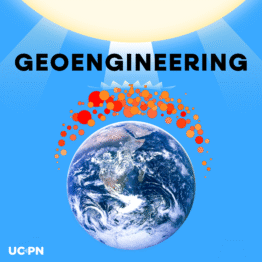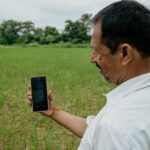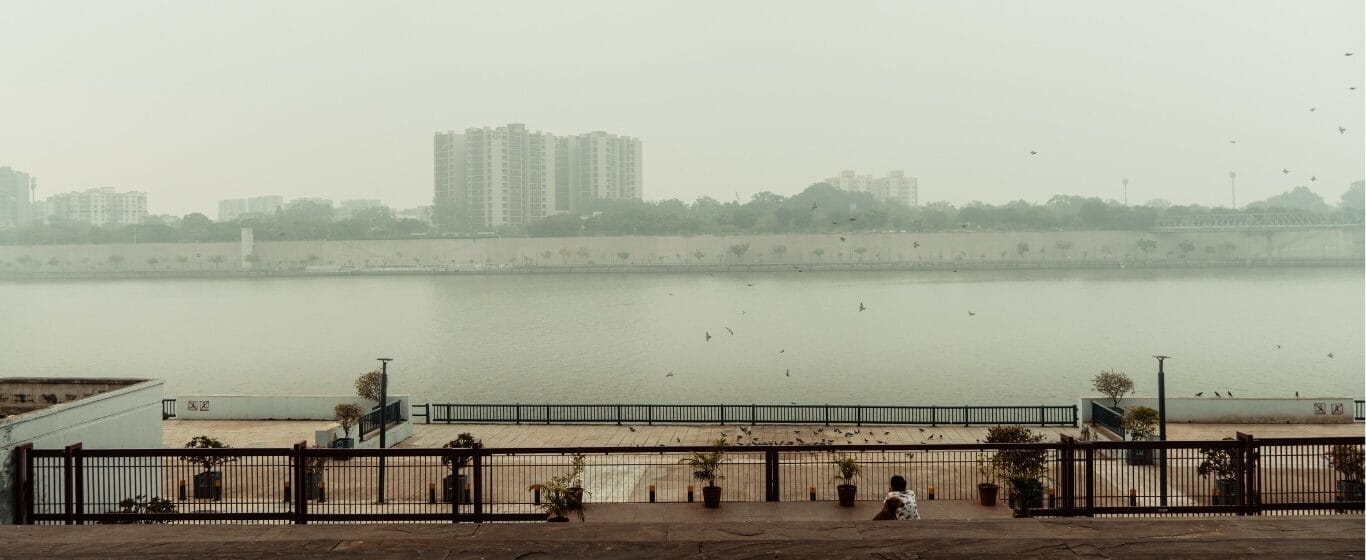A WhatsApp message that saves crops: Bologna’s supercomputer revolutionizes open weather data
by Cristina Marrone
[Translated from Italian] The ECMWF data center combines physical and AI-based models for increasingly personalized and democratic forecasts. Indian farmers are warned of monsoon weather with a WhatsApp message.
BOLOGNA – As soon as you cross the threshold of the room that houses the supercomputer of the European Centre for Medium-Range Weather Forecasts (ECMWF) in Bologna, which is a global benchmark for weather forecasting, you feel like you’re entering a technological cathedral. Green LED lights pulse in sequence and illuminate the floor with a magnetic glow. Neat rows of black cabinets run parallel for a dozen of meters that are crossed by turquoise cables that descend from the ceiling to the floor like luminous vines, Avatar-style. Yet, alongside the supercomputer capable of processing trillions of operations per second , the memory of European meteorology still relies on a medium from the past: magnetic tapes. The walls of aligned boxes up like books in a library actually speak of a necessary choice: the tapes guarantee the safe and long-lasting preservation of a gigantic amount of data, over 1.3 exabytes —the equivalent of 130 trillion songs or half a day of global internet traffic. An ancient technology, yet still unsurpassed in terms of reliability and efficiency (magnetic tapes consume no electricity, are low-cost, and have a long lifespan), for preserving the world’s largest meteorological archive.
The ambient temperature inside the supercomputer corridors is maintained at approximately 27 degrees Celsius. This is a deliberate choice because a warmer environment reduces cooling effort and therefore saves energy. The servers receive water at 35°C that exits at 40°-45°C and is then cooled externally and continuously recycled.
….
The example of the monsoons: a WhatsApp alert message
AI models require a lot of power only during the training phase, and this makes them accessible even to developing countries . “This is why they can run anywhere,” adds Venuti, “even on a laptop, without requiring a multi-million euro infrastructure.” Thus, in Malawi , where a trial is underway, or in India with the monsoons , highly refined forecasts developed in Bologna can be transformed into a simple WhatsApp message for millions of farmers . “In India, where the monsoon arrived unusually early this year, 39 million farmers were reached with messages on their phones alerting them of the anomaly,” adds Pedram Hassanzadeh , professor of climatology at the University of Chicago who supervised the project.
AI will not completely replace physical meteorology, especially for complex and infrequent phenomena, but it is revolutionizing its accessibility, drastically lowering the entry threshold and therefore making weather forecasts more democratic.
…
























